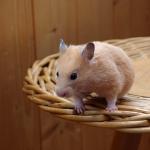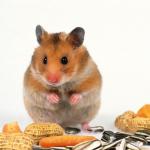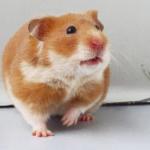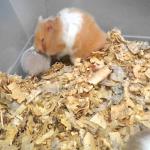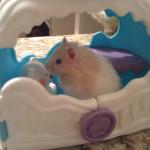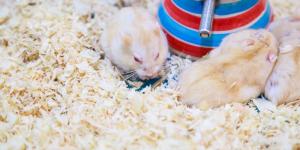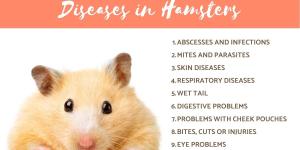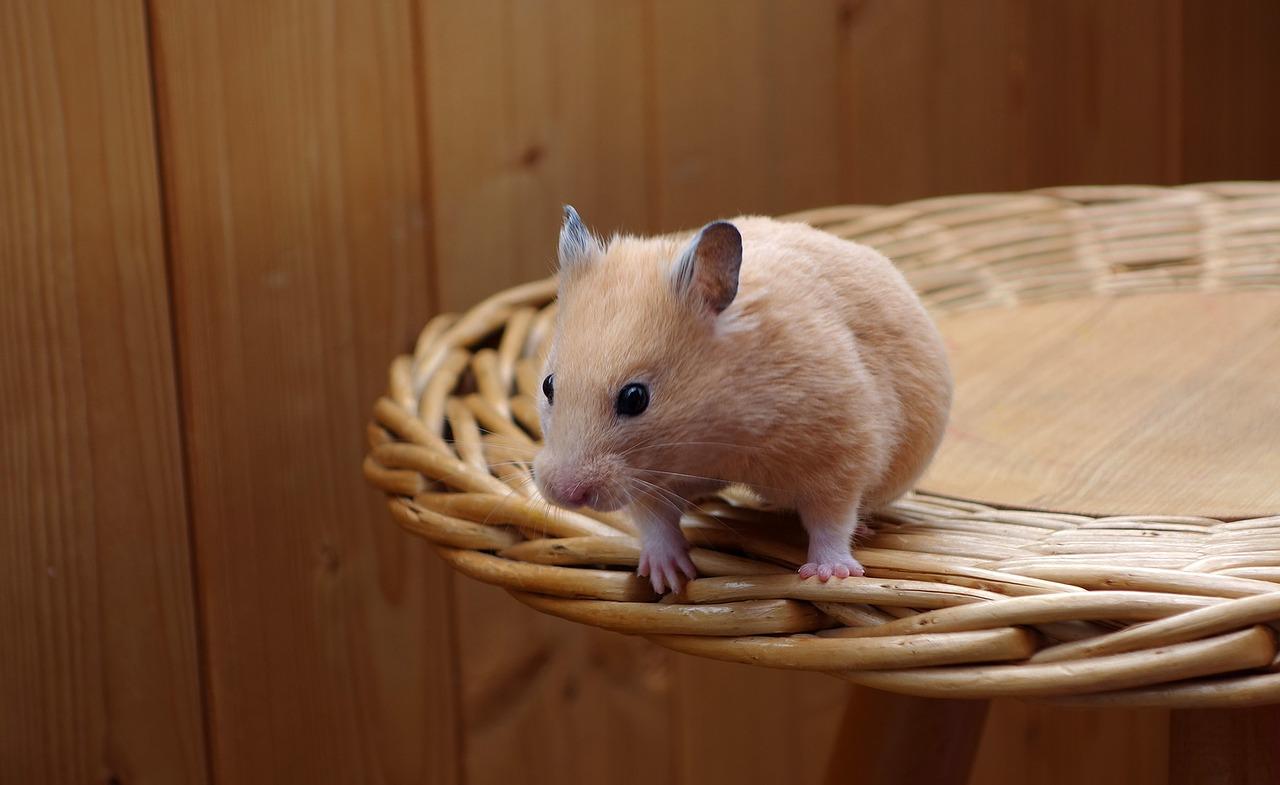Golden Hamster

The golden hamster or Syrian hamster (أبو جراب) was first discovered in the Middle East, specifically in Syria. Its current state in nature is considered threatened, as fewer and fewer colonies reside in the wild. However, there is little chance of the breed becoming extinct in captivity as they have become a very popular pet. At AnimalWised, we bring you everything you need to know about the golden hamster breed.
- Africa
- Syria
Physical characteristics of the golden hamster
The golden hamster stands out for their large size compared to other hamster species such as the Chinese hamster or the Roborovski dwarf hamster. They can reach 17 cm (6.6") in length, although males do not usually reach 13 - 15 cm (5.1" - 5.9"). They can weigh between 90 and 150 grams (3.1 - 5.3 oz.).
The coat is golden and can be short or long. Longhair golden hamsters are also known as an Angora hamster. The color is golden, somewhat darker on the back and lighter on the belly. Currently some breeders have managed to vary the shades of coat through genetic selection, obtaining black, red, white, gray and chocolate Syrian hamster specimens.
A curiosity is their very expansive cheek sacs that are called pockets. They are found in the space from the cheeks to the shoulders and they can store food in them. The largest amount accumulated in a golden hamster is 25 kg (55 lb), an incredible sum for their size.
Golden hamster behavior
Unlike other types of hamsters, the golden hamster is more shy and reserved, preferring tranquility over excessive activity. This also applies to the relationship with other animals since they can become aggressive or uncomfortable with other types of rodents. This includes animals of the same or another species.
Still, golden hamsters are not particularly aggressive with people, as they rarely bite. Due to their size, we should be able to handle them without problem and without the risk of them escaping. It is important that before interacting physically the hamster gets used to us. Before you put your hand inside the cage and grab them without warning, talk to them and offer food. This will ensure a positive and pleasant start for both of you. Their mild temperament with humans also makes them a great pet for children.
Golden hamster diet
Feeding this this hamster breed is very simple. You can find a suitable commercial feed for golden hamsters which should make up the basis of their diet. This feed mainly consists of seeds and cereals. Additionally, you should provide vegetables and fruit suitable for hamsters twice a week. We recommend pear, apple, broccoli or green peppers. There are also some forbidden foods for hamsters you need to avoid.
It is also important the gold hamster receives a certain amount of protein. They can obtain this from insectivorous feed for poultry or unsalted cheese. They should have access to clean fresh water at all times, ideally from a bottle, not a dish.
Golden hamster habitat
We will need to source a cage which measures 60 cm x 40 cm x 40 cm (23.6" x 15.7" x 15.7") minimum. The larger the cage, the more our golden hamster will enjoy their new home. It should have good ventilation, a waterproof floor and secure doors and bars. They like to climb and for that reason it is preferable to use multi-story cages or those with stairs, something that exercises the muscles of our pet.
We will have feeders and a water bottle, wheels and a house or nest to rest. In addition, you can add gravel to the ground to make it feel more comfortable.
Golden hamster health
You should regularly clean and disinfect the cage and the items it contains to prevent disease. The most common diseases that can affect your golden hamster are:
- Pneumonia or a cold: usually due to drafts which we can solve by moving our pet to a more suitable environment.
- Fleas and lice: prevention is best maintained by general hygiene and buying an anti-parasitical spray from the pet store.
- Heatstroke: can happen during hot weather, try to lower the temperature as quickly as possible trying not to get them wet. If you do not see a rapid improvement, visit your veterinarian.
- Fractures and injuries: these are common from falls and usually heal by themselves with some help (betadine in case of injuries or make a small splint for a week). You should go to the veterinarian regardless, in case it is more severe than we think.
Golden hamsters can technically go into hibernationatoo cold. However, when keeping them as pets, this should not happen, so we should not likely see our hamster go into hibernation. If it looks like they have died or are unresponsive, it is possible they may be hibernating, so go to a veterinarian just in case.
Golden Hamster photos
